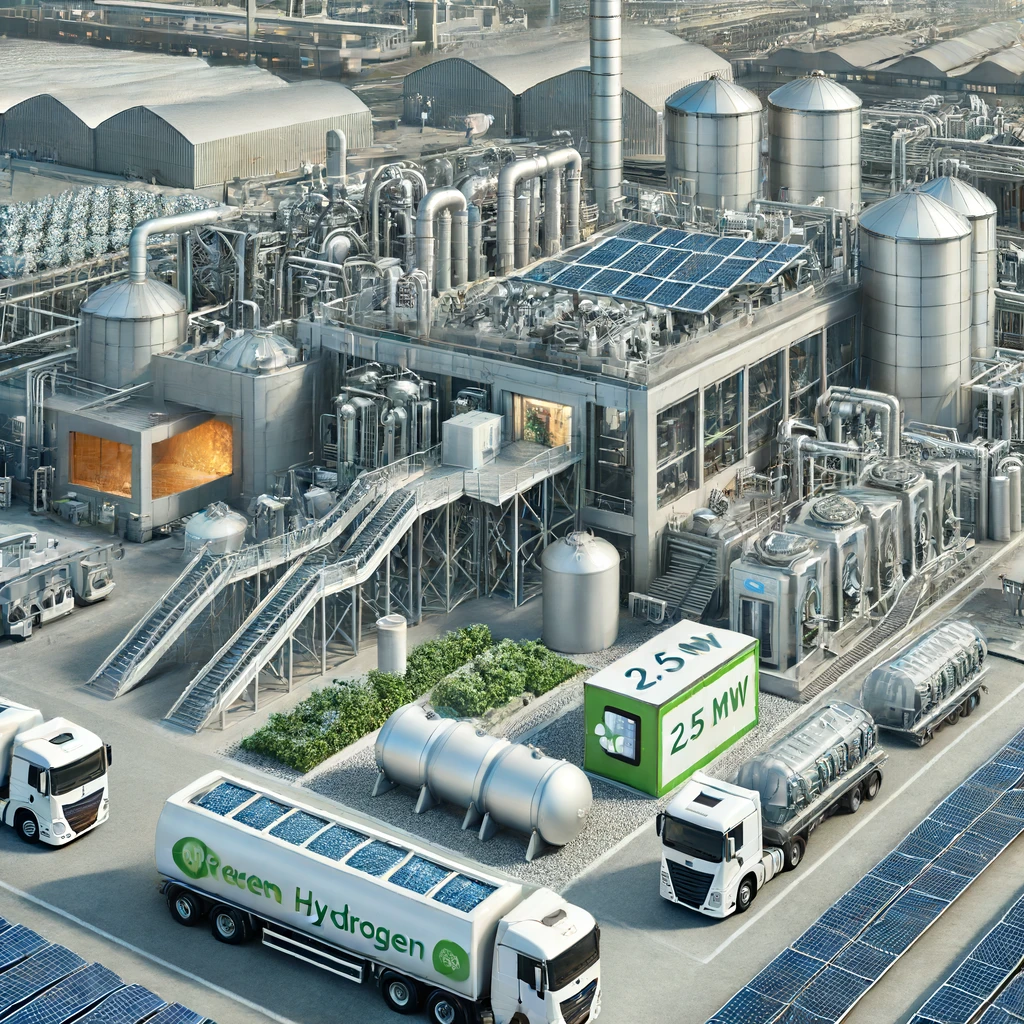Sustainable Aluminum Production: Green Hydrogen Integration for Cleaner Aluminum Recycling

A study conducted by researchers from several prestigious institutions including Universidad Autonoma de Chile, Universidad de Castilla-La Mancha, Universidad de Santiago de Chile, University College Cork, Universidad del Desarrollo, Universidad Politecnica de Madrid, and Universidad de Leon, investigates the potential of using green hydrogen as an alternative energy source in aluminum recycling processes. With the aluminum market rapidly growing, particularly in sectors such as food packaging and construction, the industry faces the challenge of managing its significant energy consumption and environmental impact. This research explores how green hydrogen, produced from renewable energy sources, can replace natural gas in aluminum recycling to achieve economic and environmental benefits.
The Growing Aluminum Market and Its Challenges
Aluminum production is known for being energy-intensive. Recycling aluminum is a more sustainable option, consuming up to 15 times less energy compared to extracting aluminum from bauxite ore. The global aluminum market is expected to reach 38 million tons by 2025, driven by annual growth rates of around 4.7 percent between 2020 and 2025. This expansion is primarily fueled by the food packaging and construction sectors.
The aluminum industry accounts for about 5 percent of total industrial energy consumption, with significant portions required for high-temperature thermal processes. The integration of green hydrogen presents an opportunity to enhance the industry's sustainability. Green hydrogen is produced via renewable energy sources, mainly through water electrolysis, and serves as a clean alternative to natural gas.
Evaluating the Economic Viability of Green Hydrogen
The study focuses on replacing natural gas with green hydrogen in the smelting and refining furnaces of aluminum recycling facilities. This approach aims to reduce approximately 4.54 ktons of CO2 emissions annually, contributing to both economic and environmental sustainability. The researchers conducted a case study in Spain to evaluate the economic viability of this integration, using key metrics such as Net Present Value (NPV) and Internal Rate of Return (IRR).
To determine the feasibility, the study involves detailed facility sizing and economic evaluation. The facility's energy needs are assessed, and a system for producing renewable hydrogen is designed. This system includes an alkaline electrolyzer and a process for recycling salt slag. The green hydrogen produced is used both in the aluminum recycling process and as fuel for a fleet of hydrogen-powered trucks.
Economic viability is a critical aspect of the study. The researchers analyzed capital expenditure (CAPEX) and operational expenditure (OPEX) to understand the costs involved. They used single- and multi-parameter sensitivity analyses to identify the factors that most significantly impact economic outcomes. The results show a favorable NPV of €57,370, an IRR of 9.83 percent, and a payback period of 19.63 years. The main factors influencing NPV are the initial electricity consumption and the price of hydrogen.
Environmental benefits are a major highlight of this study. Integrating green hydrogen into the aluminum recycling process can significantly reduce greenhouse gas emissions. The estimated reduction of 4.54 ktons of CO2 emissions annually is substantial, showcasing the potential for green hydrogen to play a key role in the industry's transition towards sustainability.
Methodology and Results: A Path to Sustainability
The methodology involves several key steps. Initially, the researchers determined the energy requirements for the aluminum recycling processes, which included producing renewable hydrogen through a 2.5 MW alkaline electrolyzer and recycling salt slag, capable of generating up to 50 Nm3/h of hydrogen per ton of slag treated. For energy production, a photovoltaic solar installation and a renewable-origin power purchase agreement (PPA) supply the necessary renewable energy. The solar array is estimated to produce 21.33 percent of the required energy, with the remaining 78.67 percent provided through the PPA.
The study also includes detailed specifications for the electrolysis system, hydrogen compression and storage systems, and the hydrogen refueling infrastructure for the truck fleet. The integration of hydrogen and natural gas is carefully managed to optimize efficiency and sustainability. The economic analysis considers capital expenditure (CAPEX) and operational expenditure (OPEX), with sensitivity analyses to identify the most critical factors. The study employs Oracle Crystal Ball simulations to perform a detailed sensitivity analysis, providing a comprehensive understanding of the economic viability.
The results indicate that integrating green hydrogen into aluminum recycling is both economically viable and environmentally beneficial. The approach supports the industry's goals for reducing carbon emissions and enhancing energy efficiency. The study highlights the importance of market and technical considerations in implementing green hydrogen solutions.
The research demonstrates that green hydrogen integration in aluminum recycling can lead to significant economic and environmental gains. By reducing reliance on fossil fuels and lowering greenhouse gas emissions, the aluminum industry can make substantial progress towards sustainability. The findings suggest that green hydrogen has the potential to play a crucial role in the broader efforts to transition to more sustainable industrial practices.
- FIRST PUBLISHED IN:
- Devdiscourse









